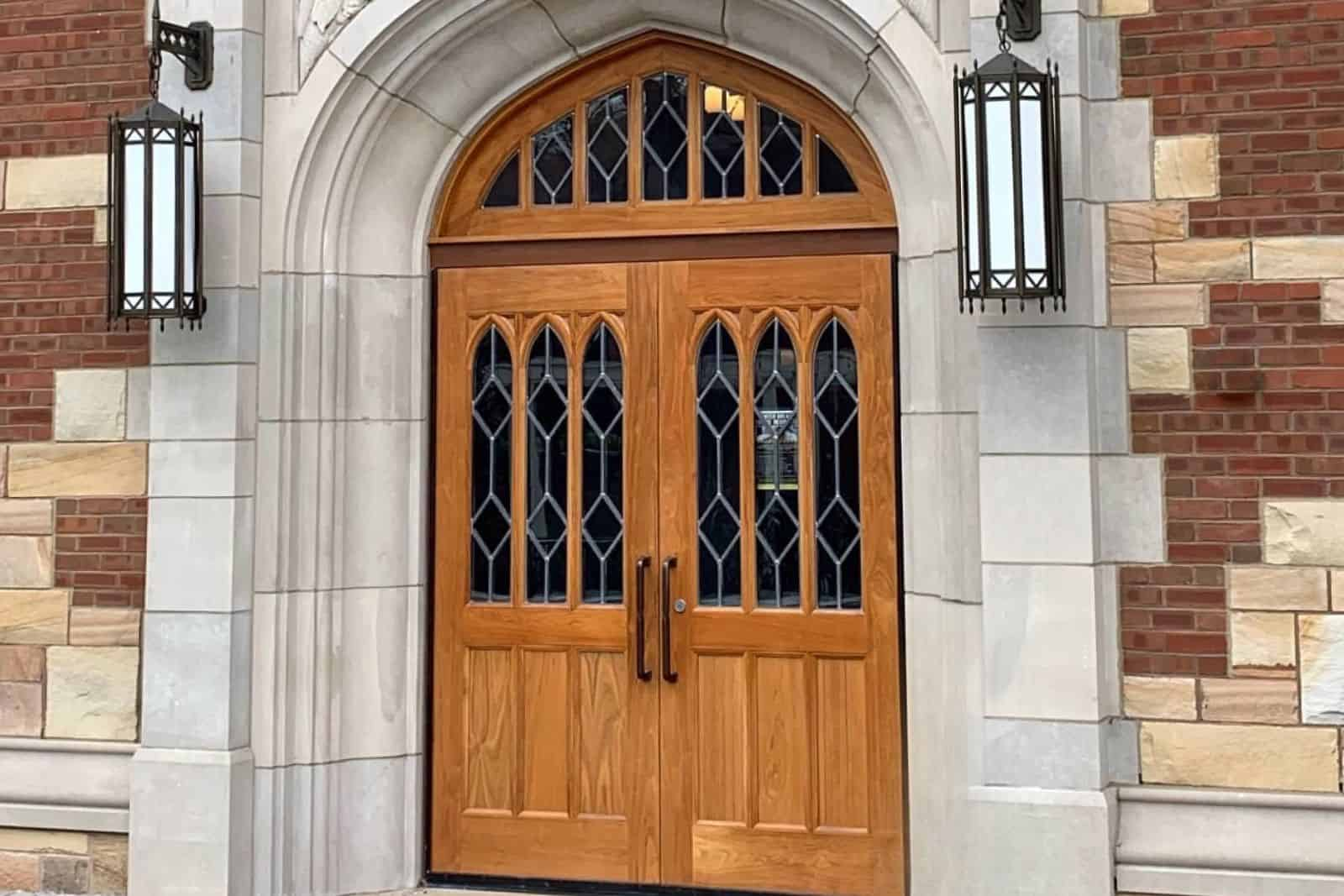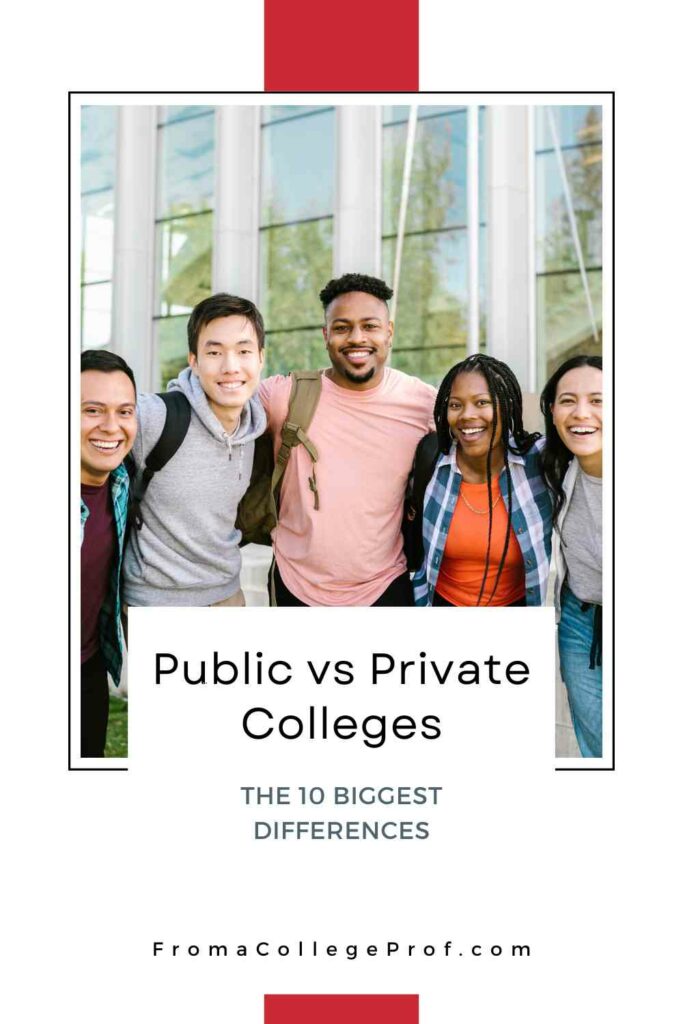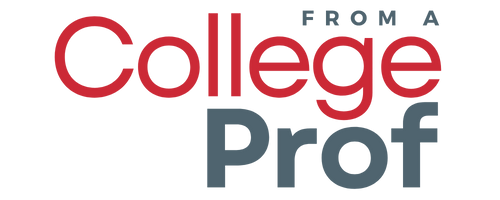The 10 Biggest Differences Between Public & Private Colleges

Confused about which type of college is right for you? This guide will help you understand the 10 key differences between public & private colleges & universities. From funding sources and student demographics to class sizes and academic programs, we’ll share the biggest ways these institutions differ so you can make the best college choice for you.
The number of postsecondary options for students pursuing a bachelor’s degree can be (and often is) overwhelming. It’s difficult to decide where to begin and to understand the advantages and disadvantages of your options.
As a college admissions officer, I’ve worked at and I’ve consulted with a wide variety of schools. A question students and parents often ask me is, “What’s the main difference between public and private colleges and universities?”
With so many options, you need to better understand which are viable possibilities that make the most sense for you.
Public Vs Private Colleges & Universities: The Stats
The United States is home to more than 3,700 degree-granting institutions. Of these schools:
- 2,400 award a 4-year undergraduate degree or higher
- 1,575 are public colleges and universities
- 1,576 are private (non-profit) colleges and universities
- 582 are private (for-profit) colleges and universities
- Schools range from research intensive to liberal arts to career and technical classifications
If you’re interested in what public and private schools are located in your state, the National Center for Education Statistics [NCES] has a great search tool.
Our home state of Ohio has 14 state universities plus 24 regional campuses. Ohio has an additional 53 private four-year colleges in the state. These numbers don’t include two-year community colleges or technical colleges.
The primary difference between these types of higher education institutions is how they are funded. As we dive in, we recognize many differences between colleges and universities that are publicly and privately funded.
We’re going to focus on the key differences that are most likely to be relevant to prospective students and their families in their college search. We’re also focusing only on public and private nonprofit schools, not for-profit schools.
1. University Funding

Funding is really at the heart of the differences between public and private institutions. Where schools get their money explains nearly everything about how they operate.
For parents and students, it’s helpful to understand how these funding differences impact tuition costs and financial aid options.
State universities are funded by state governments.
- Relying on state funding makes these schools very susceptible to budget cuts and changes in state support.
- However, it does provide in-state students more scholarship and grant opportunities.
Private colleges are solely supported by tuition revenue and fundraising or private donations.
- Relying on tuition without the benefits of state funding means tuition rates may vary more frequently.
- However, they’re able to independently adjust need-based and merit-based aid, including increases, without state oversight.
2. Student Enrollment

Several factors account for the difference in overall size of public versus private schools, including affordability and selectivity in admissions.
Generally, state universities have much larger student enrollment. While some of the top public universities are highly selective (think UC Berkeley, University of Virginia, University of North Carolina), the majority are not.
Some public institutions are even open enrollment. Open enrollment schools will admit any student who is a state resident with an earned high school diploma.
The combination of open access and lower tuition rates (see difference in funding above) lends itself to higher enrollment numbers.
3. Cost

Student tuition and fees is another difference between public universities and private colleges. It’s actually a more complex issue than it might seem at first glance. Let me explain.
In-State Tuition vs Out-of-State Tuition
Many people assume that in-state costs are less than out-of-state costs, regardless of the type of educational institution. That’s true for public schools but not necessarily for private ones.
For in-state students at public universities, costs are typically less expensive than at private colleges. Aside from lower tuition as a starting point, additional grants and scholarships are available for students who attend their state university.
The average cost for state universities for in-state students is slightly over $10,000.
However, if you decide to attend a state university in another state, you can expect to pay as much or more than a private university.
The average cost for out-of-state students, including international students, to attend a state university is over $20,000.
Private colleges do not charge different tuition rates for in- or out-of-state students. It’s the same regardless of where you live. Private colleges can choose to offer scholarships to specific states based on their enrollment goals, but otherwise the cost is the same.
The average cost of private colleges is nearly $40,000.
Comparing the Sticker Price
Keep in mind, these tuition costs are all before any grants or awards. In the admissions world, we refer to these costs as the “sticker price.”
Students rarely pay the full sticker price at public or private schools. If they do, they can afford it.
If you’re trying to decide where to apply and you’re interested in different types of colleges, we recommend applying to both public and private schools. You can evaluate your actual cost when you receive your financial aid award letters.
You can also email the school’s admissions and financial aid office to negotiate tuition costs. They might not be able to make adjustments, but it’s always worth a try!
4. Who Teaches Most Classes

Depending on where you attend, college classes may be taught by professors, lecturers or graduate students. High school students may not pay as much attention to this difference, but it’s an important one to consider if you’re deciding between public and private universities.
The major difference in who teaches undergrad classes isn’t necessarily an advantage or disadvantage, but rather something to be aware of so you can make the best decision for you.
Another important note is the lack of training that full professors have in teaching. Contrary to what most people believe, a professor in Organic Chemistry likely has very little to no education in teaching. Seems odd, I know, but it’s true.
The information below is based on our decades of experience working and teaching at a variety of colleges and universities.
- In addition to my admissions experience, I’ve been a full-time faculty member for a Research 1 state university and I’m currently an adjunct for a doctoral program at a private college.
- Kristie taught for several private colleges as an adjunct and she’s been a lecturer at a Research 1 state university for 14 years.
- Mary began her college teaching career as a lecturer at the same Research 1 state university. Now in her 14th year, she’s an assistant professor of practice.
READ MORE >>> About Us
Who Teaches at Public Universities
Due to the sheer number of students enrolled at most large state universities, many undergraduate courses are taught by lecturers or graduate assistants and not full-time professors.
Full-time professors with a PhD are typically focused on publications, their research agendas, grant funding and mentoring graduate students. Teaching undergraduate students is simply not a priority for professors at Research 1 universities who are likely to be renowned experts.
The number of full-time lecturers is increasing at public universities. They’re hired to teach undergrad classes and mentor undergrad students. Lecturers (like Kristie) and professors of practice (like Mary) may have a doctorate or master’s degree, and they typically have strong work experience in their field.
Adjunct professors also teach at public universities. They’re usually experts working in their field full time who want to teach a class or two.
A large percentage of undergraduate classes are often taught by students in graduate programs. These full-time graduate assistants are working on their master’s degrees or doctoral degrees. They’ve earned an assistantship to help pay for graduate school which requires them to independently teach classes or help with grading or research.
Who Teaches at Private Colleges
At most private colleges, full-time faculty with PhDs teach and mentor undergraduate students. Classes may also be taught by adjunct faculty.
Full-time professors at private colleges are often focused on teaching, mentoring and research. This allows undergraduates to learn directly from a tenured expert in their field of study. It also lends itself to more research opportunities for undergrads as well as contributions to publications.
Just like at public universities, adjunct faculty at private colleges teach one or two classes. They’re likely working full time but want to share their expertise and work experience with college students.
The bottom line? It’s critical to know and understand who will be teaching the majority of your undergraduate courses and how that may or may not be advantageous for you.
5. Class Size

It’s important to keep in mind that class size can vary widely between public and private schools based on the specific institution. That said, public universities tend to have larger class sizes.
It’s not uncommon for introductory courses at public schools to have several hundred students in a lecture hall or online. But you’ll also find upper level courses that have fewer students, often in the 25-50 range.
Private colleges often have smaller class sizes that range from 20-30 students.
Again, this isn’t a hard and fast rule, but it’s something to consider. Look at the specific colleges and majors you’re considering to compare.
6. Student Demographics

The student body at public universities tends to be more diverse than at private universities. If you’re a student at a public institution, you’re more likely to interact with people of a different race, ethnicity and socioeconomic status.
According to NCES in 2022, 46% of students at public universities were White, 26% Hispanic, 14% Black, 6% Asian, 3% American Indian or Alaska Native and 3% two or more races.
The same data shows that 67% of students at private colleges were White, 12% Hispanic, 9% Black, 7% Asian, 3% American Indian or Alaska Native and 5% two or more races.
According to NCES in 2022, students from families with incomes below $30,000 made up 38% of students at public schools compared to 18% of students at private schools.
Also, students from families with incomes above $200,000 made up 21% of students at public institutions and 42% of students at private institutions.
7. Academic Programs

Public universities and private colleges also differ in the type and number of degree programs, majors and minors.
Public schools typically have a wider range of majors and specialty programs. They’ll offer 2 to 3 times the number of majors as a private college. These offerings give students more options and the opportunity to really hone in on a specific specialty.
Private colleges are more likely to have broad majors with a few minors. Many are liberal arts colleges that emphasize a curriculum requiring more history, philosophy, literature and religious courses. This can provide students with a very well-rounded education.
Let’s say you want to major in business.
You’re more likely to focus on a particular area of business at a public school. For example, Mary and Kristie teach at a public university that offers a business major with 12 specializations, 6 business minors and 2 certificate programs.
If you go to a private school, you’re more likely to graduate with a broader business degree. For example, I teach at a private college that offers a business major with 5 broad concentrations along with 1 business minor.
8. Student Loan Amounts

If students used federal loans to pay for college, they’re likely to owe more if they attended a private school.
According to Education Data Initiative, students who used federal loans to pay for college owe an average of roughly:
- $28,000 for a public state university education
- $40,000 for a private college education
As I discussed earlier, figures like this should be considered, but should not be the sole factor in deciding which type of school to attend. These are national averages and anomalies exist on both ends of the spectrum.
The family income of a student and the student’s academic ability are two of the biggest factors that will impact the amount of student loans needed to pay for college. The more grants and scholarships awarded, the lower the amount that needs to be borrowed.
Again, we recommend applying to both types of schools if they interest you. Compare your personal financial aid packages to understand the actual costs.
9. Graduation Rates

Graduation rates are certainly important when considering where to go to college. Most graduation rates for a 4-year Bachelor’s degree are based on completion in 5 or 6 years.
The average 6-year graduation rate for public universities is slightly lower than private colleges.
Again, these are national averages and the graduation rates vary greatly from institution to institution. The more selective an institution is, regardless of public or private, the higher the graduation rates.
Graduation rates also vary between 2-year and 4-year institutions. Two-year institutions often have lower graduation rates due to the mobility of their students and the fact that most enrolled are part-time.
10. Student Experience

A final difference between public and private universities is the overall student experience.
As we discussed above, public universities generally have higher student enrollment and larger campuses. As a student, you have access to a wider variety of extracurricular activities (clubs, organizations, intramurals) and course offerings.
Public institutions also have a broader range of resources, such as libraries, laboratories, athletic and recreation facilities.
The lower student enrollment and smaller campus at private colleges also has many benefits. As a student, you have opportunities to build relationships with your professors and get to know a larger portion of the student population.
Private institutions may not have as many offerings, but it’s usually easier to participate in multiple sports or extracurricular activities.
But as we’ve mentioned several times, differences in the overall college experience are true in a general sense. You need to look at specific institutions for a more accurate comparison.

